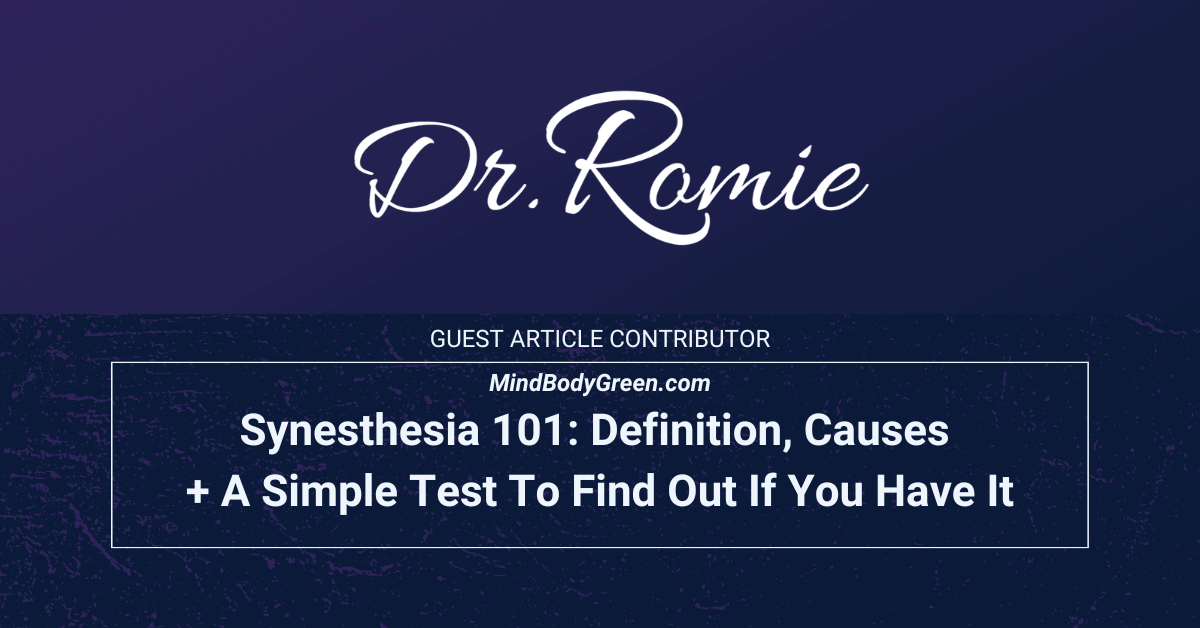Dr. Romie spoke with MindBodyGreen recently about synesthesia. What is it?
Synesthesia is a neurological phenomenon in which information meant to stimulate one of your senses stimulates several of your senses. It is seen in roughly 3 to 5% of the population, and in about 40% of those people, it’s genetic. It’s also significantly more common in women than men.
“Synesthesia is not considered a disease, nor is it associated with a higher rate of mental disorders,” Dr. Romie explains, adding “Books and articles in the past have eluded to synesthesia being related to mental health disease, but research shows that there is no correlation between synesthesia and schizophrenia, psychosis, addiction, or any other mental health disease.” There’s also no clinical diagnosis for synesthesia.
One link that has been found in research, however, is synesthesia and autism. In one 2020 study, researchers note that there may be higher rates of synesthesia among diagnosed individuals with autism. “Up to 20% of autistic individuals may experience synesthesia, and more research is currently being conducted to understand the correlation between the two,” Mushtaq says.
Synesthetes can often ‘see’ music as colors when they hear it, and ‘taste’ textures like ’round’ or ‘pointy’ when they eat foods. Another example of synesthesia is seeing the same color every time you see a certain number or hearing sounds with light motion.
